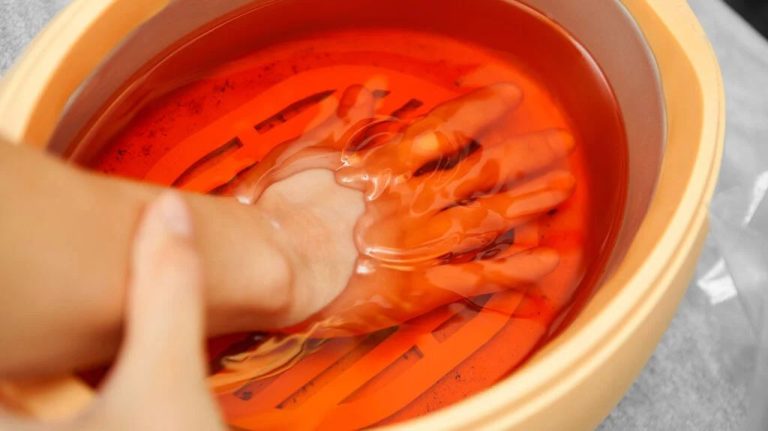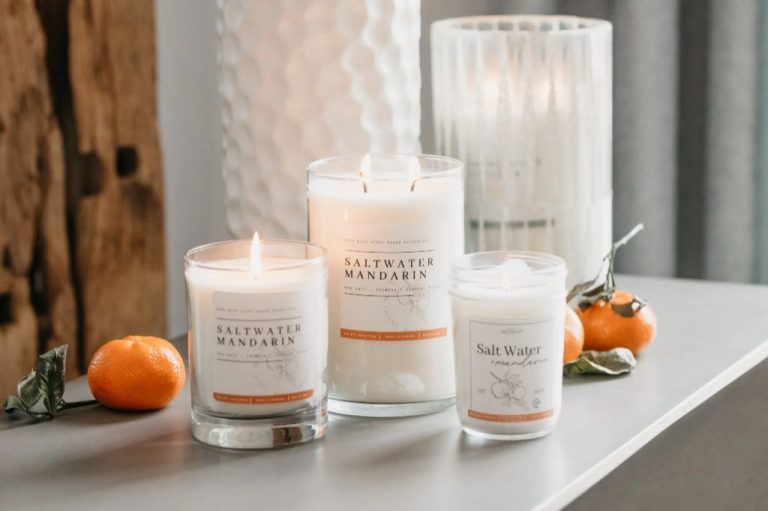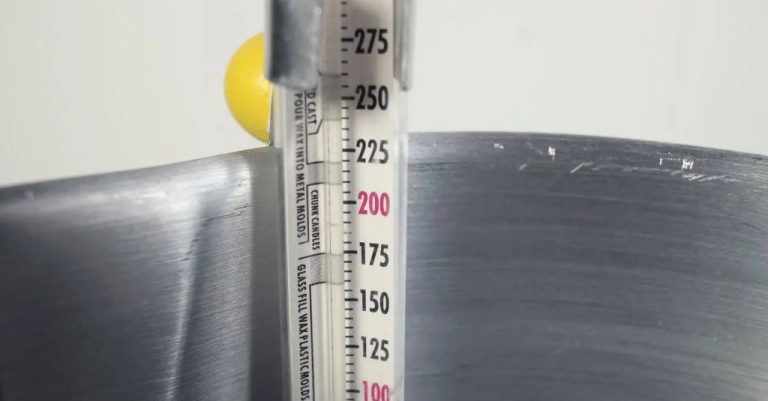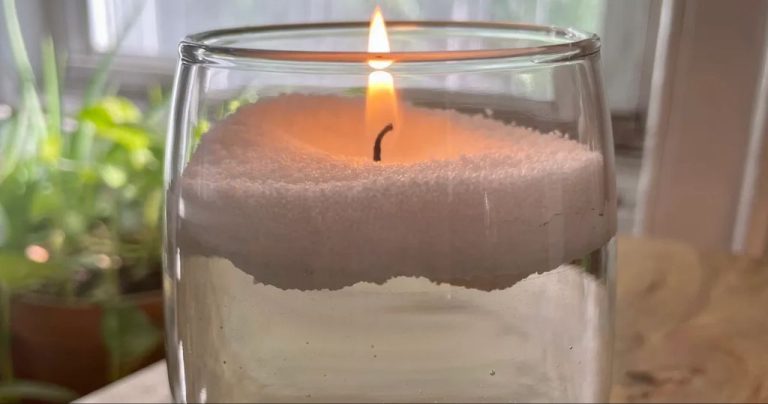What Is The Shelf Life Of Beeswax Pellets?
What Are Beeswax Pellets?
Beeswax pellets, also known as pastilles, are small granules or pellets of pure beeswax. They are made by melting down raw beeswax and pouring it into pellet molds. As the wax cools and hardens, it forms into small uniform pellets or beads.
Beeswax is a natural wax produced by honey bees (Wikipedia). Worker bees secrete wax from glands on their abdomen and use it to build the honeycomb structure of their beehive. Beekeepers will harvest portions of the honeycomb, melt it down, and filter it to remove impurities. The liquid wax is then poured into molds to form pellets or blocks of reusable beeswax.
The pellets allow beekeepers, crafters, and artisans to easily use small portions of beeswax at a time. Common uses for beeswax pellets include candle making, cosmetics, polishes, artisan soaps, and various arts and crafts. The pellets melt uniformly and are convenient for measuring out exact amounts for recipes.
Beeswax Composition
Beeswax is composed of a mixture of organic compounds, predominantly esters, fatty acids, and hydrocarbons. The exact chemical composition can vary, but beeswax consists of approximately 70-72% esters, 12-15% fatty acids, and 10-15% hydrocarbons.
The major fatty acids in beeswax are palmitic acid, palmitoleic acid, and oleic acid. The main ester is myricyl palmitate. Some minor components include alcohols, hydroxy acids, and plant pigments like carotenoids.
The fatty acid composition affects the hardness and melting point of the beeswax. A higher ratio of saturated fatty acids like palmitic acid results in a harder beeswax with a higher melting point. The hydrocarbon portion also contributes to the hardness and consistency.
The exact chemical composition can impact the shelf life and stability of beeswax. A higher content of saturated compounds provides more stability and a longer shelf life. Minor components like plant volatiles and hydroxy acids can contribute to deterioration over time.
Factors Affecting Shelf Life
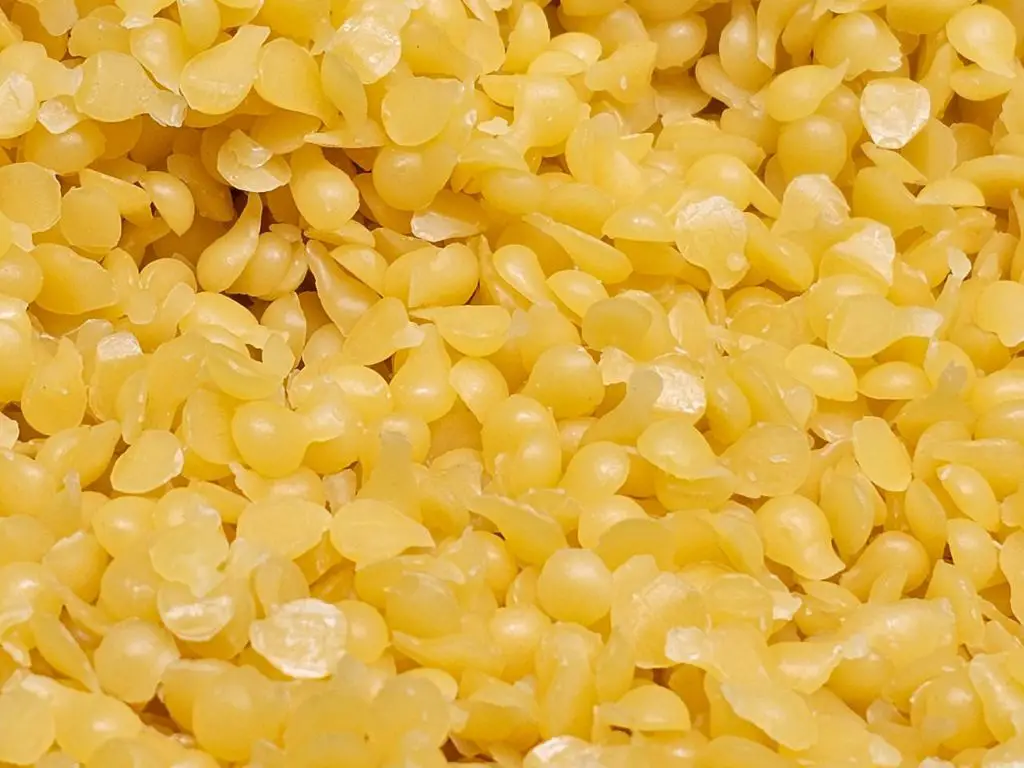
There are several key factors that impact the shelf life of beeswax pellets:
Storage Temperature – Beeswax has a melting point of around 144-147°F. Storing beeswax pellets at cool room temperatures below 75°F will help extend shelf life by slowing the rate of evaporation of volatile compounds. Warmer temperatures cause the wax to soften and evaporate faster. According to one study, storage at 98.6°F accelerated deterioration of beeswax quality over 30 days (source).
Exposure to Air and Moisture – When exposed to air, beeswax can oxidize and become rancid more quickly. Moisture encourages mold growth. Storing beeswax in an airtight, sealed container helps protect it from air and moisture to extend shelf life.
Containers Used – The container the beeswax is stored in impacts shelf life. Dark glass or metal tins help block light to slow oxidation. Plastic containers can allow more air exchange compared to glass or metal. Proper sealing is important to limit air exposure. Containers should be clean and dry before use.
Optimal Storage Conditions
According to experts at Crystal’s Raw Honey (https://crystalsrawhoney.com/blogs/news/the-best-way-to-store-your-beeswax-to-keep-it-fresh), the ideal storage conditions for beeswax pellets are a cool, dry, and dark place. Beeswax should be kept in an airtight container away from light, heat, moisture, and dust in order to maximize its shelf life. Temperatures between 60-70°F and humidity around 50% are recommended.
Storing beeswax properly in a pantry, cupboard, or closet can keep it fresh for up to 1-2 years. Exposure to heat, humidity, and light will cause the wax to lose its aroma and become brittle or sticky. Placing beeswax in the refrigerator or freezer is unnecessary and may actually create excess moisture. The key is keeping the wax in a sealed container in a consistently cool, dark spot. Proper storage will maintain the quality and integrity of beeswax for craft and home use.
Signs of Expiration
There are a few key signs that beeswax pellets have expired or gone bad:
Change in color/texture – Fresh beeswax is a light yellow color. As it ages and oxidizes, it will darken and take on a brownish hue. The texture will also harden and become brittle over time.1
Mold growth – If stored in humid conditions, beeswax can develop mold. You may see fuzzy mold spores on the surface of the pellets. Moldy wax should not be used.2
Loss of aroma – Fresh beeswax has a mildly sweet, honey-like scent. As it expires, the aroma will fade. Stale beeswax tends to lack any distinct smell.1
Average Shelf Life
When stored properly, beeswax pellets typically have an average shelf life of 6 months to 1 year before quality starts to deteriorate. According to Stampington (https://stampington.com/premium-white-beeswax-pellets-4-oz/), white beeswax pellets have a shelf life of around 3 years when kept in optimal conditions. However, for most types of beeswax pellets, the expected shelf life falls within 6-12 months.
The shelf life can be extended by keeping the beeswax in cool, dry storage away from light and heat. Properly stored in an airtight container, beeswax can remain usable for 1-2 years before it starts to lose its freshness and become dried out or discolored. With exceptionally good storage methods, some sources indicate beeswax may last several years before expiring (https://beeswax.co.nz/beeswax-information/). But in general, beekeepers and crafters should expect their beeswax to start deteriorating in quality after about a year.
Extending Shelf Life
There are several methods that can help prolong the shelf life of beeswax pellets:
Tips to Prolong Shelf Life
Store beeswax in a cool, dark place like a cupboard or pantry. Exposure to light and heat can cause beeswax to degrade more quickly. Keep beeswax tightly sealed in an airtight container to prevent moisture absorption. Consider freezing or refrigerating beeswax for maximum shelf life. Add desiccants like silica gel packets to absorb excess moisture.
Freezing/Refrigeration
Freezing beeswax is one of the most effective ways to extend its shelf life. According to one study, freezing beeswax at -20°C extended the shelf life from 35 days at room temperature to 140 days [1]. Refrigeration at 4°C also helps prolong shelf life compared to room temperature storage.
Using Desiccants
Since moisture is a key factor in beeswax degradation, using desiccant packets can maintain an optimum moisture level. Silica gel is commonly used to absorb excess humidity inside the storage container. This helps minimize moisture absorption by the beeswax itself, preventing spoilage.
Safety Concerns
When storing beeswax pellets for an extended period, there are some safety concerns to be aware of. Primarily, you’ll want to watch out for signs of rancidity and mold growth, which can indicate it’s time to properly dispose of the pellets.
Rancidity occurs when the wax oxidizes and develops an unpleasant odor and taste. This is generally triggered by exposure to air, light, and warmth over time. Rancid wax can contain free fatty acids and aldehydes that may cause irritation when handled or used. If you detect a rancid smell from your beeswax, it’s best to discard it.
Mold is another hazard with old beeswax. Mold spores are present in the air and can contaminate the wax if stored improperly. You may notice fuzzy mold growing on the surface of the pellets or elsewhere in the container. Moldy wax can trigger allergic reactions and should not be used.
As a general rule, you should throw away beeswax pellets once they are 1-2 years old. Rancidity and mold become increasingly likely after this point. Trust your senses – if the pellets smell bad, look odd, or you have any doubts about their safety, don’t risk using them. Discard them and start fresh with new beeswax instead.
Recycling Old Beeswax
Once beeswax pellets reach the end of their shelf life or are no longer needed, there are several ways to recycle and repurpose the wax rather than throwing it away. Some popular options include:
Making new candles or lip balm – Old beeswax can be reused by melting it down and making new candles, lip balm, lotion bars, and other bee-related products. This helps reduce waste and saves money on supplies. Simply melt down old wax in a double boiler and strain out any impurities before pouring into molds or containers. Beeswax from pellets works just as well as new wax for DIY projects (https://beeswaxco.com/lifestyle/reuse-beeswax-scraps/).
Composting – Since beeswax is a natural product, it can biodegrade in the environment when composted. Add small amounts of beeswax pellets or scraps to your compost pile or bin to safely break down the wax. The wax will help aerate the compost and add beneficial nutrients. Make sure to break wax into small pieces before composting (https://joybileefarm.com/things-to-make-with-beeswax/).
Repurposing – Get creative with projects to reuse old beeswax instead of throwing it away. Make beeswax food wraps, furniture polish, fire starters, ornaments, crayons, wood sealant, and more. Beeswax is versatile for DIY projects and lasts a long time when repurposed (https://www.happyorganics.co/blogs/the-happy-organics-blog/what-to-do-with-your-used-beeswax-candle-scraps).
Frequently Asked Questions
Here are some common questions about the shelf life of beeswax pellets:
What is the shelf life of beeswax pellets?
Properly stored beeswax pellets can have an indefinite shelf life. Some sources cite a shelf life of up to 20 years when kept in a cool, dark place (Aromatics). However, the quality may start to degrade after 1-2 years.
Does temperature affect the shelf life?
Yes, temperature has a big impact on shelf life. Beeswax melts at around 145°F. Storing pellets in high heat can cause them to melt and lose their shape. The optimal storage temperature is below 75°F (Stampington).
Can you use beeswax pellets past their expiration date?
It may be possible to salvage old beeswax by straining out impurities. However, expired beeswax tends to become brittle and discolored. For best results, it’s recommended to use fresh pellets.
How can I extend the shelf life of beeswax pellets?
Store beeswax in an airtight container in a cool, dark place. Keeping pellets in the refrigerator or freezer can also prolong freshness. Only take out the amount needed for a project to limit air exposure.

